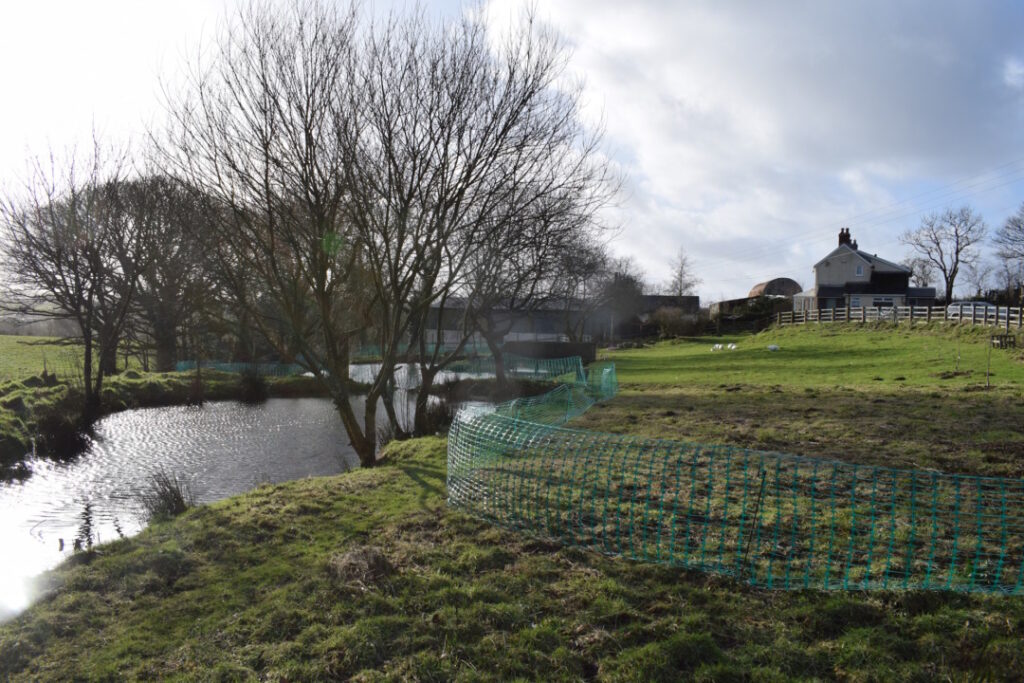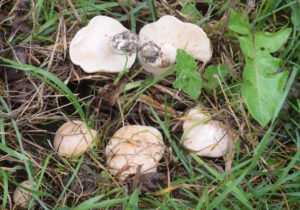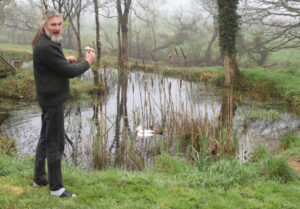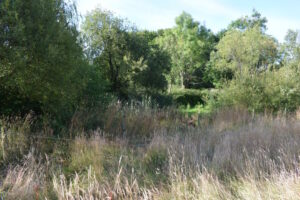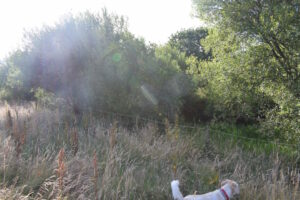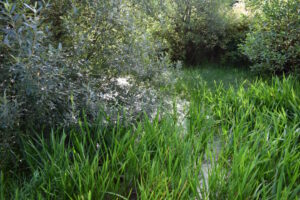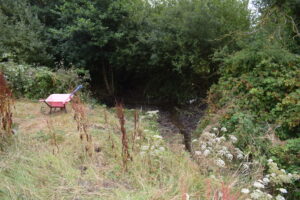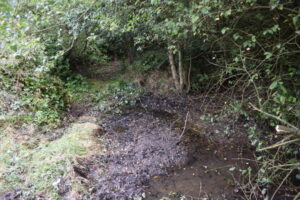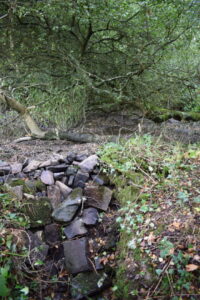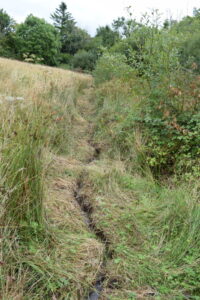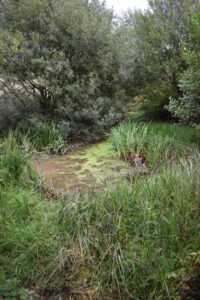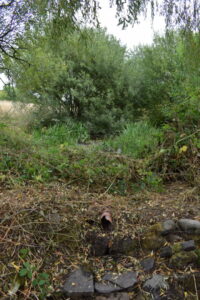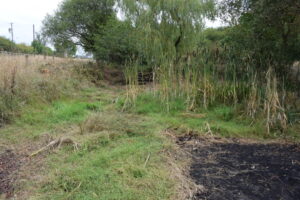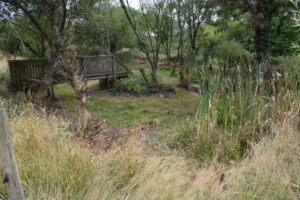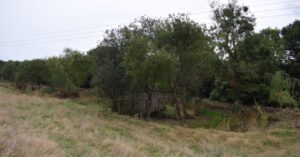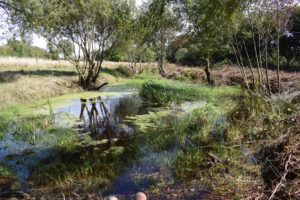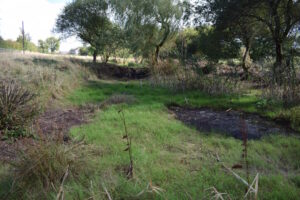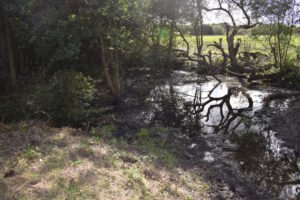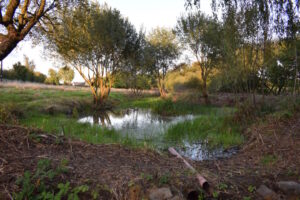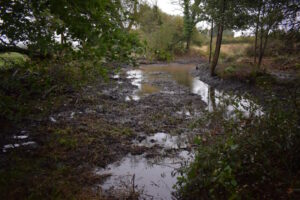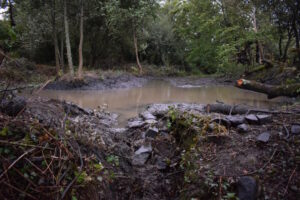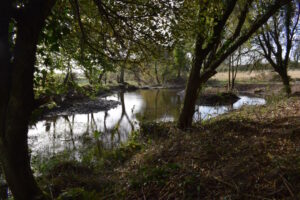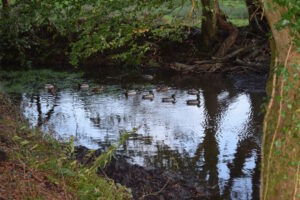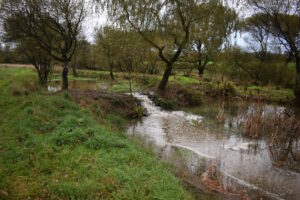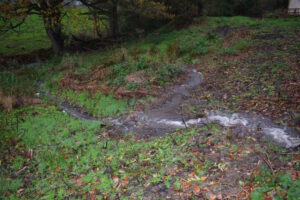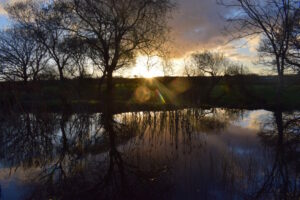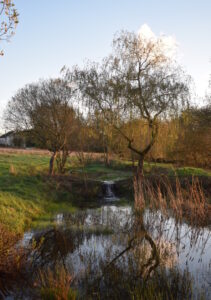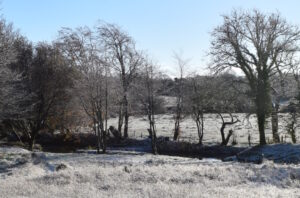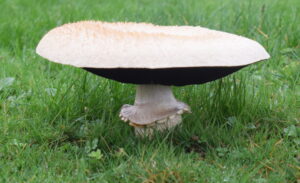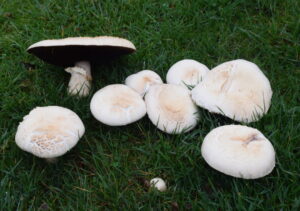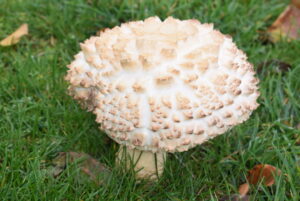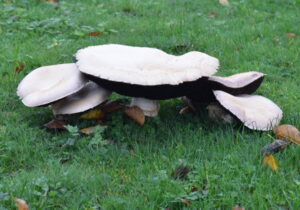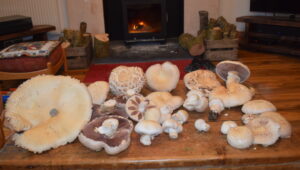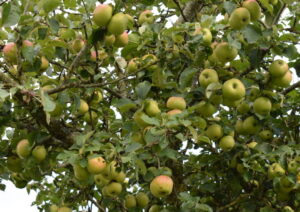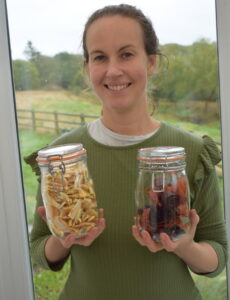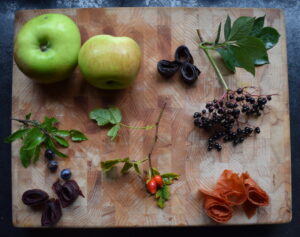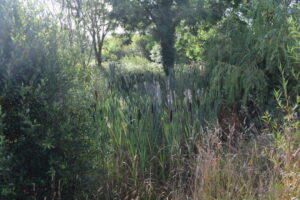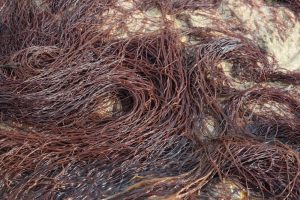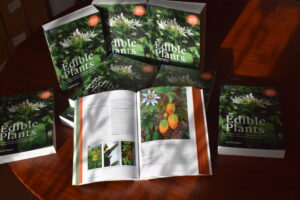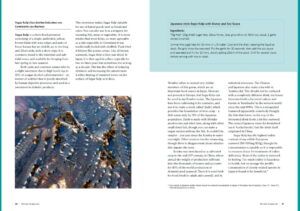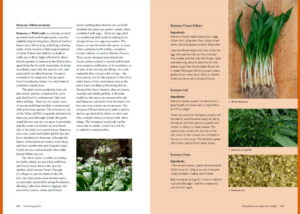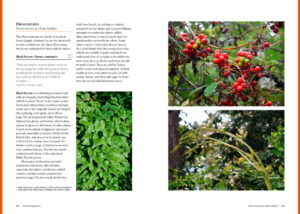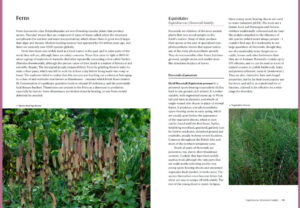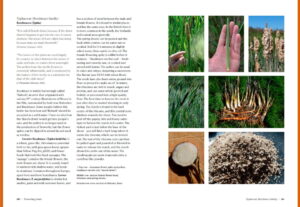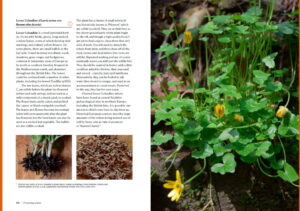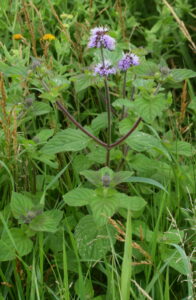27/09/2024 Please note that this is the last new content I will post on this website. I have a new one in the pipeline.
Much (though nothing like enough) has been said and written about the looming collapse of civilisation. This typically refers to techno-industrial civilisation globally rather than just the West (although it was the West that invented this form of civilisation), and the aspects of collapse that are usually addressed are ecological, economic and socio-political. I believe there is another aspect – one which is arguably even more fundamental, because it is the reason why we are finding it so difficult to make any progress on the others.
Psychosis is detachment from reality. It can include hallucinations (apparently being aware of things that aren’t actually real), delusions (believing things that aren’t true), denial (refusal to believe things which are obviously true), and generally disordered thinking, and leads to secondary symptoms such as loss of motivation and self-neglect. I think Western society is already well on its way towards a major psychotic breakdown, and that things are probably not going to improve (on the scale of the whole of society) until we’ve hit rock bottom.
This psychosis manifests in many different ways. Each is a very serious problem in its own right, but it is the interplay between them that makes this crisis – the Metacrisis – so profound.
The delusion that economic growth is sustainable and desirable
Economic growth is unsustainable in a finite physical system. Anybody who ever thought about this for more than five seconds should have always been able to understand it, but for anybody who found that too difficult then the Club of Rome spelled it out in The Limits to Growth back in 1972. Most people didn’t listen, and those that did listen either didn’t know what to do about it, or couldn’t convince enough other people. The reasons why things played out this way are extremely complex, but the consequences are relatively simple: humanity is now well into ecological overshoot and the unwanted results are proliferating all around us. And yet regardless of how obvious it is that growth cannot be sustained, there is no sign of mainstream politicians and economists making contact with reality any time soon. Politicians spend plenty of time talking about climate change and our many other systemic ecological problems, but the entire political spectrum, including the left, continues to conduct all serious debate under the assumption that growth is both sustainable and desirable, on both national and global scales.
There is a movement against this, but it is small and insignificant. “Degrowth” acknowledges the reality that growth-based economics has to end, but it too suffers from a detachment – in this case from the realities of geopolitics and human nature. It advocates for managed economic contraction on a global scale, done in a way which is deemed to be globally fair. In other words it is based on the idea that people in the West and other relatively rich parts of the world will accept a voluntary drop in living standards to allow the rest of the world to catch up. It demands that the West not only acknowledges that the global pie must get smaller, but that our own share must get smaller while the share of the global poor increases. No politician could implement anything based on this idea, either in a democracy or in an authoritarian state, for if they tried to do so they would swiftly be replaced, either democratically or otherwise. If this reality is acknowledged then it follows that the politics of the future will be driven by the desire and demand for survival of various in-groups as the global situation deteriorates. The West is not going to take responsibility for the plight of the global poor and the most immediate victims of climate change, because it faces an existential crisis itself. Hence Degrowth is (politically) an impossible fantasy.
The materialistic denial of consciousness
Materialism is still the dominant philosophy of “serious thinkers”, certainly outside of philosophy and arguably inside it as well. However, there is a growing realisation that materialism cannot be true, because it is either incoherent or it requires us to deny the existence of our own minds. Whole books have been written about this, but I have to do it in a few paragraphs. If readers are unfamiliar with the wider debate I suggest starting with Thomas Nagel’s What is it like to be a bat? (1974). For our purposes here, I will boil materialism down to four types: emergent, reductive, identity and eliminativist.
The emergent version claims that consciousness “emerges” from brain activity (or a combination of brain activity and the rest of the material world). There are two problems with this. The first is that it makes no sense to claim X can emerge from Y when Y does not contain the necessary components for X. In other words there is nothing about brain activity that makes it even remotely comprehensible how something like consciousness could emerge from it. The second is that the thing that allegedly emerges has a completely different set of properties to those of brain activity, and there’s no obvious reason why it should be categorised as ‘material’ or ‘physical’ – consciousness appears to be something completely different, so if we label that ‘material’ then we’ve got two radically different sorts of materiality. Emergentism is actually a particularly weird sort of dualism (epiphenomenalism) which some people slap the name ‘materialism’ on to.
The reductive version claims that consciousness “can be reduced to” brain activity, and suffers from the reversed version of the problem described above. Because the properties of consciousness are so radically different to those of brain activity, it is very difficult to see how it can make sense to claim that we can reduce consciousness to brain activity. In fact, the only way such a reduction could work is to leave out all the subjective stuff. This was exactly what Descartes and Galileo did at the dawn of science, so it is hardly surprising that we can’t just shove it back in to materialistic science now and expect this procedure to work.
Identity theory claims consciousness ‘is’ brain activity. The problem with this is providing an explanation of how X could possibly ‘be’ Y when they have entirely different sets of properties. How can the experience of pain ‘be’ neurons firing? What does this even mean? Whatever ‘is’ or ‘be’ means in these statements, it is not the same meaning as in the sentence “Water is H20”. We actually know what this second statement means – we know exactly how and why water is H20, because this is a scientifically discovered identity. Nobody has any idea what the statement “consciousness is brain activity” is supposed to mean. The people who say it do so in order to defend materialism, not because it actually makes any sense (to themselves or anybody else).
Because of the problems described above, a small number of materialists have abandoned all three of these attempts to explain minds in terms of brains and instead claim that our subjective vocabulary doesn’t refer to anything that actually exists. They call it “folk psychology” and say it needs to be replaced with purely objective vocabulary. These are the “eliminative materialists” – so called because their goal is the elimination of what they consider to be problematic subjective terms like ‘consciousness’ and “qualia”. Eliminativism is coherent, in the sense that it has (theoretically) got rid of the logical problem that plagues all the other forms of materialism, but in doing so it makes clear the psychotic status of materialism. Eliminativism is the equivalent of a psychiatric patient who refuses to believe that their own mind exists. It is Descartes’ “cogito ergo sum” reversed: I have thought, and I have concluded I am not!
Even though materialism is either incoherent or bonkers, and reduces life to meaningless mechanisms, it is as prevalent both in mainstream science and in western society in general as growth-based economics is in mainstream politics. In both cases there is no consensus about a sane replacement. They are broken paradigms, but the necessary paradigm shifts cannot take place because there is no agreement on what the new paradigms should be. In the case of materialism, the traditional options of dualism and idealism do have some defenders (mainly the latter) but they end up fighting old philosophical battles that none of the traditional positions can win. Perhaps a more promising alternative is neutral monism, but this has always been a minority view and remains very much that way today. The main problem with neutral monism, as I see it, is that implies panpsychism, which seems wrong to me. I don’t even think plants and fungi are conscious, let alone rocks, stars or computers.
The postmodern denial of objective reality
Postmodernism is the leading edge of Western society’s detachment from reality. It doesn’t even pretend to be attached to reality, because it is founded on the claim that there is no such thing. Postmodernism is a branch of philosophy which can trace its roots back to Nietzsche’s denial of the fixed meanings of words and his obsession with power. In its current form it emerged between the 1960s and 1980s, and its core claims are that reality is socially constructed, and that what ‘is’ cannot be separated from what those in power have deemed “ought to be”. Postmodernists claim that everything is a power game, including science. Postmodernism is relevant not just because of its corrosive effect on anyone and anything which is founded on science and reason (the defining characteristics of modernity), but because its influence has now permeated the whole of society to the extent that most people are willing to agree that there’s no such thing as a perspective-free truth. This even extends to scientists being unwilling to commit to the claim that the statement “humans are descended from apes” is an objective truth – a known fact about objective reality. They’ve been conditioned to believe that this amounts to dogmatism – to the denial that all scientific knowledge is always open to revision. In fact, this is just one example of an objective truth claim that will never be falsified, because it is too integrated into what we could call our structural understanding of reality. In other words, the only way scientific claims which are this well supported could ever turn out to be untrue is we completely give up on the idea that we can have knowledge of objective reality. Which is, of course, exactly what the postmodernists want.
The Metacrisis
These three forms of psychosis are mutually-hostile. If you take scientific materialism seriously then you cannot possibly believe that growth-based economics is sustainable, and vice versa. And though they take radically different approaches to knowledge of it, both materialism and economics recognise a reality that is independent of human power relations, which makes both of them incompatible with postmodernism and everything it has begotten.
These core psychoses are just part of a much bigger problem. Another big part of it is social media, which creates and maintains echo chambers where people’s subjective ideas about reality are reflected back at them to the extent that they become convinced that their perspective is objective and everybody else is wrong (and probably immoral). We live in a thoroughly post-truth world.
The psychosis I’m describing is not merely a symptom of specific social or political ideologies, but a much broader and deeper problem with the way the Western world interacts with reality. It is a kind of epistemic disease, where not only do we fail to see the truth of things, but we actively construct barriers that prevent us from doing so. This disease of detachment stems from several roots, both ancient and modern, and it has grown over time into something systemic—woven into the fabric of Western civilisation.
The worship of technology as salvation
Another major aspect of this detachment from reality is the quasi-religious belief that technology will save us. This belief permeates both mainstream and progressive thought. The mainstream sees endless innovation as the key to eternal economic growth, while progressives often place their hopes in “green technologies” that will supposedly allow us to keep living our high-consumption lifestyles while mitigating environmental damage.
In fact, while technology can certainly help solve specific problems, it is ultimately a tool, not a solution. The problem is not that we haven’t invented the right kinds of technology yet; the problem is that we are living in a way that is fundamentally incompatible with the ecological limits of our planet. The worship of technology as the solution to all our problems blinds us to this fact, preventing us from seeing the need for deeper, more radical changes to the way we live.
This techno-optimism is another form of psychosis — a refusal to confront the hard reality that there are no technological fixes for problems that are inherently systemic and moral in nature. Our obsession with technology as the answer to everything is an extension of the Cartesian split: it is the idea that we, as detached, rational beings, can control and manipulate the world through our inventions, without ever having to change our fundamental relationship to it.
The pathological fear of limits
Perhaps the most pernicious manifestation of this psychosis is the Western fear of limits. Since the Enlightenment, Western civilisation has been driven by a desire for infinite expansion—whether that means economic growth, the conquest of nature, the construction of empires or the pursuit of personal freedom. The idea that there are limits to what we can achieve or consume is not just denied; it is actively repressed.
This repression is visible in our economic policies, which cling to growth at all costs, and in our personal lives, where the idea of voluntary simplicity or restraint is seen as backward or undesirable. We are a society that revels in excess — excess of choice, consumption, and stimulation. But this obsession with limitless growth is leading us straight into ecological collapse. The idea that we might need to accept limits to growth — to consumption, to the kind of technological solutions we rely on — is anathema to the Western mind, which equates limits with failure or oppression.
This fear of limits is not just an economic or political problem; it is a metaphysical one. It reflects a profound disconnection from the reality of our situation: that we are finite beings living in a finite world, and that any attempt to live as though this were not the case is guaranteed to end in disaster.
In this sense, the psychotic breakdown of Western society is not just a matter of failing to solve our problems — it is a failure to even perceive what those problems really are. We are trapped in a hall of mirrors, unable to distinguish between our fantasies of limitless growth, technological salvation, and personal freedom, and the hard ecological and physical realities of the world we actually live in.
The Cartesian Split and the fragmentation of knowledge
One of the primary sources of our detachment is what has become known as the Cartesian split — the division between mind and matter, subject and object. This metaphysical divide, formalised by Descartes, has had the effect of turning human beings into disembodied spectators of the world, rather than participants in it. The real world becomes something “out there,” an inert backdrop to our personal or societal dramas, to be manipulated, controlled, and objectified for human ends.
This split is responsible for the profound fragmentation of knowledge that now dominates the West. Our intellectual culture is divided into increasingly narrow disciplines, each speaking its own language, each focused on its own microcosm, without no attempt to connect with the whole. This hyper-specialisation might work for creating technological advances, but it’s disastrous when it comes to addressing complex, systemic problems like climate change or the collapse of ecosystems. As British psychiatrist Iain McGilchrist points out in The Master and His Emissary: The Divided Brain and the Making of the Western World, this is a result of the left hemisphere’s unbridled dominance over the right—the part of our brain responsible for context, meaning, and the understanding of wholes. The left hemisphere, obsessed with details, categories, control, and measurement, has taken over our intellectual culture, cutting us off from the larger picture and, by extension, from reality itself.
The result is a society that is brilliant at solving tiny problems but utterly incapable of dealing with the big ones. Our entire worldview (if you can describe a chaotic, shattered mess as that) has been constructed in such a way that we cannot even begin to see how all these problems—economic, ecological, political, spiritual—are connected. The fractured state of Western thought is itself, in this sense, a kind of psychosis: a delusional belief that knowledge can be fragmented and yet still provide us with the tools we need to create an ecocivilisation.
This process began with the materialism that came packaged with modernism, to which postmodernism is a reaction. However, in this case the reaction – the nihilistic deconstruction of any ideas deemed to deliver power into the wrong hands, and the systemic refusal to seek or acknowledge coherent whole pictures – is itself a left hemisphere activity. Instead of a restoration of the integrated, holistic thinking of the right hemisphere, postmodernism is the left hemisphere turning on itself.
Conclusion: The Metacrisis as a crisis of perception and knowledge
The metacrisis we are facing—this intertwining of ecological collapse, economic instability, and social disintegration—is, at its heart, a crisis of perception and knowledge. It is the result of centuries of detachment from reality, a collective descent into psychosis where we no longer know how to see the world as it is, or ourselves as we truly are.
The first step in healing this condition is to recognise it for what it is. We must begin by acknowledging that our current ways of thinking, living, and organising society are not just flawed but fundamentally broken, and that they cannot be patched up with technological fixes or economic reforms. We need a profound shift in how we understand ourselves, our place in the world, and our relationship to each other and the Earth. Only then can we begin to find real solutions to the crises we face, and build a future that is not just sustainable but sane.

